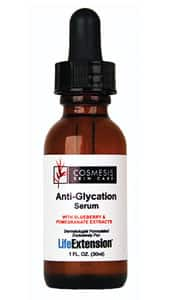 | October 6, 2009 | Higher vitamin D levels associated with increased survival among older women over a 6 year period | | Researchers from Johns Hopkins University School of Medicine, Wake Forest University, the University of Pennsylvania and the NIA report in the August, 2009 issue of the journal Nutrition Research the finding of a lower risk of death over 72 months of follow up for older women with high serum vitamin D levels. Richard D. Semba and his associates analyzed data from participants in the Women's Health and Aging studies I and II, which were designed to evaluate the causes of physical disability among community dwelling older women. For their study, the researchers selected 714 women in their seventies who had their serum 25-hydroxyvitamin D levels measured upon enrollment. Over a median of 72 months, 14 percent of the women died. Thirty-six percent of the deaths were attributed to from cardiovascular disease, 18 percent to respiratory disease, 15 percent to cancer, 27 percent to other causes and 4 percent to unknown causes. When participants were ranked according to serum vitamin D levels, deaths were found to have occurred in 8 percent of those who had vitamin D levels among the top 25 percent of subjects, compared to 19.2 percent of those in the lowest quarter. Women whose vitamin D levels were lowest at less than 15.3 nanograms per milliliter were likelier to be African-American, have a higher body mass index, and have lower levels of physical activity, cholesterol and triglycerides compared with those in the top quarter. While 35.6 percent of women whose vitamin D levels were highest at over 27.0 nanograms per milliliter used vitamin D supplements, just 16.3 percent of women in the lowest category reporting using them. The study's findings confirm those of two analyses published last year in the Archives of Internal Medicine. The authors write that vitamin D is involved in numerous functions, including regulation of the renin-angiotensin axis, modulation of cellular proliferation and differentiation, and cytokine production. It also is involved in modulating immune function and maintaining vascular health. "The role that vitamin D plays in different tissues may account for the associations between vitamin D deficiency and cardiovascular disease, cancer, and mortality," they write. "Controlled clinical trials are needed to determine whether vitamin D supplementation will improve health outcomes such as cardiovascular disease and mortality in older adults who have insufficient levels of vitamin D." | |  |  | | Chronic obstructive pulmonary disease (COPD) is a progressive and debilitating lung disease. The disease is characterized by irreversible airflow limitation in the lungs. The umbrella of COPD encompasses the following conditions: - Emphysema, in which the alveoli in the lungs, the tiny sacs where oxygen transfer takes place, are destroyed and enlarged
- Chronic bronchitis, or the permanent inflammation of airways, accompanied by a chronic cough
COPD exacts a tremendous toll on society. It affects more than 16 million people in the United States, and by 2020 it is expected to rise from the sixth- to the third-most-common cause of death in the world (Kasper DL et al 2005). Unfortunately, there is no single safe and effective treatment. However, because COPD is an inflammatory disease in which sufferers are subjected to high levels of oxidative stress, high doses of antioxidants and natural anti-inflammatories may be able to slow the disease’s progression and reduce the amount of prescription medication needed. Any patients with COPD, emphysema, or bronchitis are urged to stop smoking and to limit their exposure to environmental toxins whenever practical. Additionally, exercise, breathing exercises, and oxygen therapy may be helpful, as well as the use of steam and hot-mist vaporizers. If the breathing difficulty results in trouble eating, a strong multivitamin that includes magnesium is recommended to prevent malnutrition and restore energy to damaged cells. Because of the role of oxidant stress in causing and perpetuating COPD (Drost EM et al 2005) and the low levels of natural antioxidants in patients’ tissues (Kluchova Z et al 2006; Rahman I et al 2006; Nadeem A et al 2005), antioxidant supplementation may be helpful (Kelly FJ 2005; Spurzem JR et al 2005; Romieu I et al 2001). Levels of vitamins A and E are significantly lower during exacerbations of COPD than they are in stable COPD, suggesting that antioxidants should be used during exacerbations (Tug T et al 2005). Although vitamins A, C, and E are beneficial, vitamin A may be most important because it catalyzes removal of the most reactive form of oxygen radical (Tug T et al 2005). Serum levels of vitamin A are lower in those with moderate or severe COPD. Vitamin A supplements for 30 days improved performance on PFTs in one small study (Paiva SA et al 1996). | Life Extension Magazine October, 2009 issue now online 
- On the cover:
- Reports:
- Departments:
- Scientific abstracts:
| |  | Antiglycation Serum with Blueberry and Pomegranate Extracts   | | Glycation reactions are responsible for weakening collagen fibers’ regenerative ability, which leads to the characteristics we commonly associate with visible skin aging: wrinkling, sagging, and looseness. Fortunately, the ingredients in Cosmesis Anti-Glycation Serum with Blueberry and Pomegranate Extracts can help address the consequences of skin glycation in several ways. Blueberries contain powerful antioxidant and anti-inflammatory agents and are packed with phytonutrients called anthocyanins. Anthocyanins help keep skin looking youthful through their effects on the collagen matrix and improved microcirculation. Pomegranate extracts provide nutritional support for fibroblast cells in the skin’s dermis, resulting in healthier looking skin. | | |   | | The new Enhanced Irvingia formula provides a combination of nutrients that combat age-related fat accumulation via the following seven distinct mechanisms: - Enhancing resting energy expenditure at the cellular level.
- Slowing the absorption of dietary fat from the intestines.
- Moderating alpha-amylase enzyme activity to reduce the absorption of carbohydrates into the bloodstream
- Reducing alpha-glucosidase enzyme activity to further slow the absorption of starches and sugars into the bloodstream.
- Supporting leptin sensitivity to reduce hunger and stimulate lipolysis
- Supporting youthful levels of adiponectin to help maintain healthy insulin sensitivity
- Moderating glycerol-3-phosphate dehydrogenase enzyme activity to reduce the amount of ingested starches that are converted to triglycerides and stored as fat.
| | | |  | | Life Extension Update | | What's Hot | | Life Extension magazine | |
















